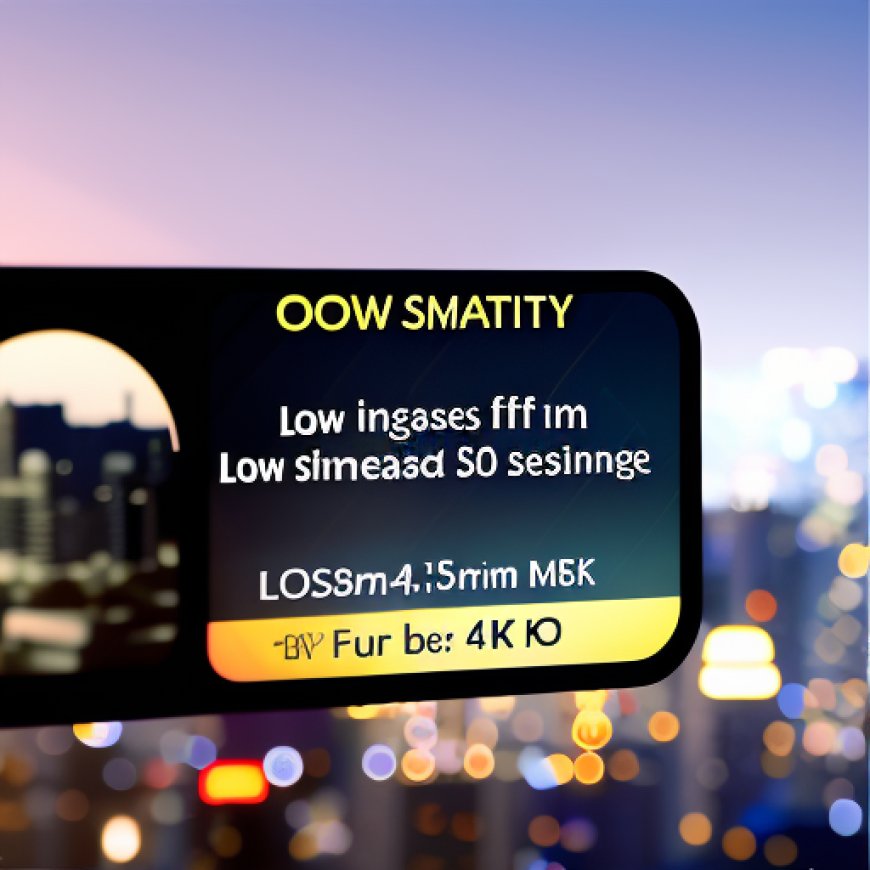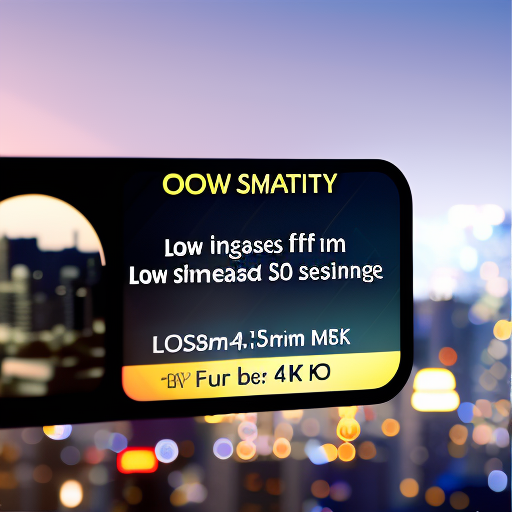Low Emissivity Film Increases Energy Savings for Commercial & Residential Use; Global Market to Reach US$ 536.6 Million by 2033 | Future Market Insights, Inc.
Low Emissivity Film Increases Energy Savings for Commercial & Residential Use; Global Market to Reach US$ 536.6 Million by 2033 | Future Market Insights, Inc. Yahoo Finance


The Role of Low Emissivity Film in Achieving Sustainable Development Goals
Introduction
The recent study conducted by Future Market Insights Global and Consulting Pvt. Ltd. (FMI) highlights the significance of low emissivity (Low-E) films in energy conservation. With an impressive 84% e-value for solar control films, Low-E films are taking energy efficiency to the next level. The market growth of Low-E films is primarily driven by the increasing acceptance and implementation of energy-efficient technologies in buildings and vehicles. This article explores the potential of Low-E films in contributing to a more sustainable future.
Market Overview
The Low Emissivity Film Market is expected to reach US$ 335.8 Million in 2023, with further growth anticipated to exceed US$ 536.6 Million by 2033, registering a steady CAGR of 4.8% throughout the forecast period. Low Emissivity Film is one of the most cost-effective techniques for decreasing a building’s energy usage, with sustainability and energy efficiency at the forefront of residential and commercial properties globally.
Benefits of Low Emissivity Film
Low Emissivity Film, also known as Low E-film, is a long-term, energy-efficient option that can greatly lower your establishment’s annual energy bills. By reducing heat gain in the summer, Low-E films contribute to year-round energy savings. Glazing accounts for 87% of heat input and 49% of heat loss in a building’s envelope. Installing Low-E films for windows can significantly reduce summer cooling demand, insulate to reduce energy consumption, and improve occupant comfort. It is estimated that 34% of commercial building HVAC energy is lost to windows.
Key Takeaways from the Low Emissivity Film Market
- The low-emissivity film industry in the United States is predicted to reach US$ 48.2 million by 2033, increasing at a 3.0% CAGR.
- The low-emissivity film industry in China is estimated to reach a market share of US$ 34.9 million, expanding at a CAGR of 4.1% by 2033.
- The solar control low E-Film segment is expected to dominate the low emissivity film industry with a CAGR of 4.4% from 2022 to 2033.
- The automotive glass segment is expected to dominate the low-emissivity film industry with a CAGR of 3.8% from 2022 to 2033.
Competitive Landscape
- Eastman Performance Films, LLC.
- Guardian Bastille
- Madico, Inc.
- TintFX
- All American Window Tinting, Inc.
- Tenco Construction Company
- 3M
- Campbell Window Film
- Epic Solar Control
- Manchester Window Film Company
- Epner Technology, Inc.
- Shandong Senhong Glass Co., Ltd
Conclusion
Low Emissivity Film plays a crucial role in achieving the Sustainable Development Goals (SDGs) by promoting energy efficiency and reducing greenhouse gas emissions. By implementing Low-E films in buildings and vehicles, we can contribute to a more sustainable future. It is essential for businesses to seize the potential for growth in the Low Emissivity Film Market and explore new opportunities. By customizing strategies and leveraging comprehensive analysis, companies can elevate their position and make well-informed decisions in today’s competitive landscape.
SDGs, Targets, and Indicators Analysis
1. Which SDGs are addressed or connected to the issues highlighted in the article?
- SDG 7: Affordable and Clean Energy
- SDG 9: Industry, Innovation, and Infrastructure
- SDG 11: Sustainable Cities and Communities
- SDG 12: Responsible Consumption and Production
- SDG 13: Climate Action
The article discusses the use of Low-E films, which contribute to energy conservation and energy efficiency in buildings and vehicles. This aligns with SDG 7, which aims to ensure access to affordable, reliable, sustainable, and modern energy for all. Additionally, the implementation of energy-efficient technologies in buildings and vehicles supports SDG 9, which focuses on promoting sustainable industrialization and fostering innovation. The article also mentions the use of Low-E films in schools, high-rise office buildings, commercial properties, and retail stores, highlighting their relevance to SDG 11, which aims to make cities and human settlements inclusive, safe, resilient, and sustainable. Furthermore, the emphasis on energy conservation and sustainability aligns with SDG 12, which promotes responsible consumption and production. Lastly, the use of Low-E films contributes to climate action (SDG 13) by reducing energy consumption and greenhouse gas emissions.
2. What specific targets under those SDGs can be identified based on the article’s content?
- Target 7.3: By 2030, double the global rate of improvement in energy efficiency
- Target 9.4: By 2030, upgrade infrastructure and retrofit industries to make them sustainable
- Target 11.6: By 2030, reduce the adverse per capita environmental impact of cities
- Target 12.2: By 2030, achieve sustainable management and efficient use of natural resources
- Target 13.3: Improve education, awareness-raising, and human and institutional capacity on climate change mitigation, adaptation, impact reduction, and early warning
Based on the article’s content, the specific targets identified are related to improving energy efficiency (Target 7.3), upgrading infrastructure for sustainability (Target 9.4), reducing environmental impact in cities (Target 11.6), achieving sustainable resource management (Target 12.2), and enhancing education and awareness on climate change (Target 13.3).
3. Are there any indicators mentioned or implied in the article that can be used to measure progress towards the identified targets?
Yes, the article mentions several indicators that can be used to measure progress towards the identified targets:
- E-value of solar control films: This indicator measures the energy-saving potential of films. A lower e-value indicates better energy savings.
- Market growth in the Low Emissivity Film industry: The growth rate and market value can be used as indicators of progress towards sustainable energy-efficient technologies.
- Reduction in energy bills: The article highlights that Low-E films significantly lower annual energy bills, which can be measured to assess progress in achieving energy efficiency targets.
- Reduction in heat gain and loss: The use of Low-E films to prevent heat gain in summer and reduce heat loss in winter can be measured to evaluate progress in improving energy efficiency in buildings.
These indicators provide measurable outcomes that can be used to track progress towards the identified targets.
Table: SDGs, Targets, and Indicators
| SDGs | Targets | Indicators |
|---|---|---|
| SDG 7: Affordable and Clean Energy | Target 7.3: By 2030, double the global rate of improvement in energy efficiency | – E-value of solar control films – Reduction in energy bills |
| SDG 9: Industry, Innovation, and Infrastructure | Target 9.4: By 2030, upgrade infrastructure and retrofit industries to make them sustainable | – Market growth in the Low Emissivity Film industry |
| SDG 11: Sustainable Cities and Communities | Target 11.6: By 2030, reduce the adverse per capita environmental impact of cities | – Reduction in heat gain and loss in buildings |
| SDG 12: Responsible Consumption and Production | Target 12.2: By 2030, achieve sustainable management and efficient use of natural resources | – Reduction in energy consumption through Low-E films |
| SDG 13: Climate Action | Target 13.3: Improve education, awareness-raising, and human and institutional capacity on climate change mitigation, adaptation, impact reduction, and early warning | – Education and awareness on the benefits of Low-E films |
Behold! This splendid article springs forth from the wellspring of knowledge, shaped by a wondrous proprietary AI technology that delved into a vast ocean of data, illuminating the path towards the Sustainable Development Goals. Remember that all rights are reserved by SDG Investors LLC, empowering us to champion progress together.
Source: finance.yahoo.com

Join us, as fellow seekers of change, on a transformative journey at https://sdgtalks.ai/welcome, where you can become a member and actively contribute to shaping a brighter future.







